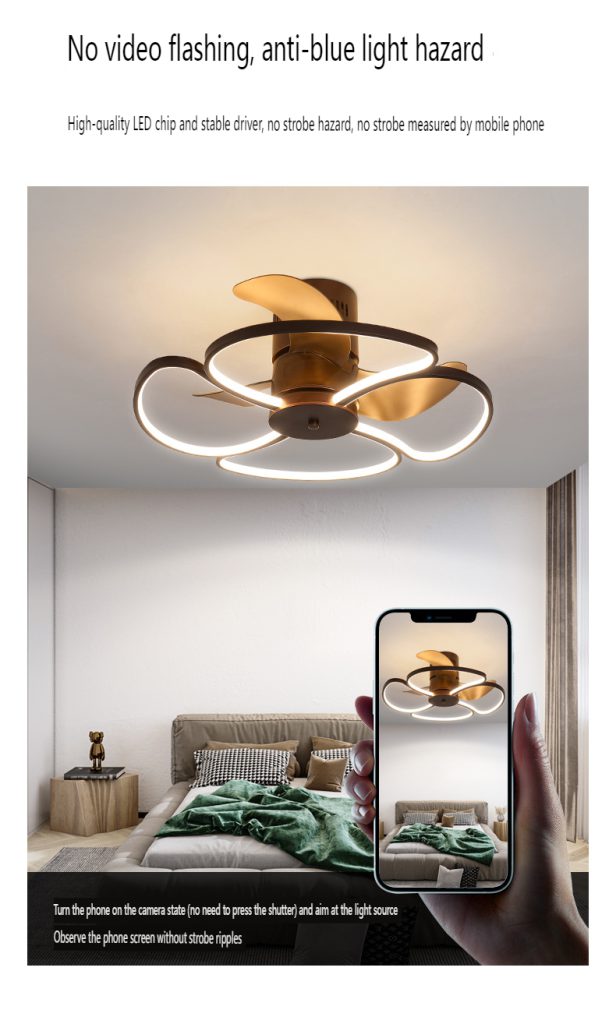Effective lighting design is a crucial aspect of interior space planning, significantly impacting both the functionality and aesthetics of a room. LED ceiling fan lights offer a versatile solution, combining illumination and air circulation in a single fixture. Here are some practical tips for integrating LED ceiling fan lights into your interior space planning to achieve the best results.

1. Assess the Room’s Function Understanding the primary function of a room is essential when planning lighting. For instance, a living room may require adjustable lighting to cater to different activities such as reading, entertaining, or watching TV. LED ceiling fan lights with dimmable features and adjustable color temperatures can provide the flexibility needed to create the ideal ambiance for various activities.
2. Consider Ceiling Height and Fan Size The height of the ceiling plays a significant role in selecting the appropriate LED ceiling fan light. For rooms with high ceilings, opt for fans with longer downrods to ensure effective air circulation. Conversely, for rooms with lower ceilings, choose a low-profile or flush-mount fan to maintain sufficient headroom while providing adequate lighting.
3. Optimize Placement for Balanced Lighting Proper placement of LED ceiling fan lights is critical to ensure balanced illumination throughout the room. Position the fixture in the center of the room to distribute light evenly and enhance air circulation. In larger spaces, consider installing multiple ceiling fan lights or supplementing with additional lighting fixtures such as wall sconces or floor lamps.
4. Choose the Right Light Intensity The intensity of the light is a key factor in creating a comfortable environment. LED ceiling fan lights with adjustable brightness levels allow you to tailor the lighting to suit different tasks and times of day. For example, brighter light is suitable for task-oriented activities, while softer light is ideal for relaxation.
5. Incorporate Smart Lighting Controls Integrating smart lighting controls can greatly enhance the functionality of LED ceiling fan lights. Use smart dimmers, timers, and motion sensors to automate lighting based on your schedule and preferences. Voice-controlled systems like Amazon Alexa or Google Assistant add convenience, allowing you to adjust settings without leaving your seat.
6. Match the Design Aesthetic The design of the LED ceiling fan light should complement the overall decor of the room. Choose fixtures that match the room’s style, whether it be modern, traditional, or eclectic. Available in a variety of finishes and materials, LED ceiling fan lights can be customized to blend seamlessly with your interior design.
7. Enhance Energy Efficiency Maximizing energy efficiency is not only beneficial for the environment but also for reducing utility costs. LED lighting is inherently energy-efficient, and when combined with ceiling fans, it provides a dual-purpose solution that minimizes the need for additional cooling systems. Look for ENERGY STAR-rated fixtures to ensure optimal performance and efficiency.
8. Focus on Safety and Maintenance Safety and ease of maintenance are important considerations in lighting design. Ensure that the ceiling fan is securely installed and that all electrical connections are properly handled. Opt for LED lights with longer lifespans to reduce the frequency of replacements and maintenance efforts.
By following these practical tips, you can effectively incorporate LED ceiling fan lights into your interior space planning, achieving a harmonious blend of functionality and aesthetics. These versatile fixtures are not only practical but also enhance the overall design of any room, making them an excellent addition to modern homes and commercial spaces.